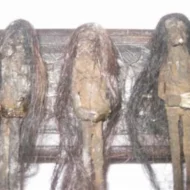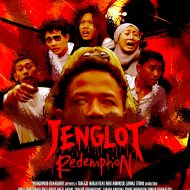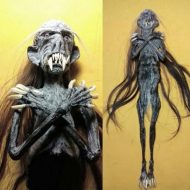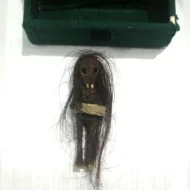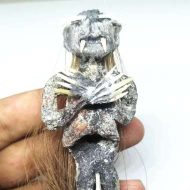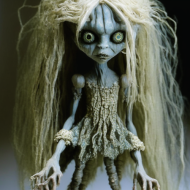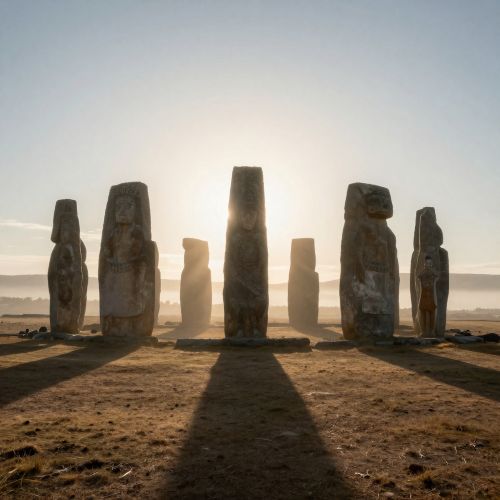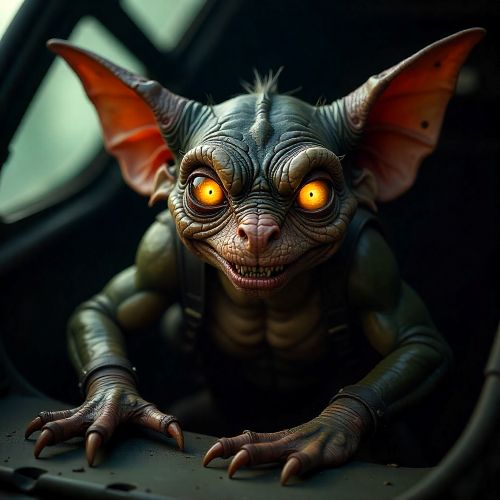Jenglot : The Voodoo Doll
Listen
At a glance
| Description | |
|---|---|
| Origin | Indonesian Mythology |
| Classification | Ghosts |
| Family Members | N/A |
| Region | Indonesia |
| Associated With | Black Magic, Voodoo |
Jenglot
Introduction
Jenglot is one of the most enigmatic figures in Indonesian folklore, often associated with supernatural powers and dark magic. These small humanoid figures are believed to possess mystical abilities, and their existence has sparked debates between believers and skeptics. While some claim that Jenglots are remnants of ancient practitioners of black magic, others argue that they are mere artifacts crafted for ritualistic purposes. Regardless of their origin, Jenglots continue to captivate the imagination of many in Indonesia and beyond.
Physical Traits
Jenglots are typically described as tiny humanoid figures, measuring between 10 to 20 centimeters in length. They have dark, mummified-like skin, skeletal faces with elongated fangs, and long hair and nails. Some legends suggest that Jenglots were once humans who practiced forbidden magic, leading their bodies to shrink and distort over time. Despite their small size, they are believed to be alive, with claims that their hair and nails continue to grow even after being captured.
Family
Unlike many mythological beings, Jenglots do not have a known family structure. However, folklore suggests that they were once human practitioners of black magic, who became trapped in their cursed forms. Some believe that Jenglots are supernatural entities that have been captured and tamed, manifesting into physical forms. Owners of Jenglots are said to be responsible for feeding them human or animal blood, which they absorb in their own mysterious way.
Powers and Abilities
Jenglots are believed to possess mystical powers, often linked to black magic and supernatural rituals. They are said to bring wealth, love, or protection to their owners, but they are also feared for their association with curses and dark sorcery. According to legend, Jenglots derive their power from consuming human blood, and failure to feed them could result in misfortune for their owners. Some claim that Jenglots can seek revenge on enemies, while others believe they serve as good luck charms.
Modern Day Influence
Jenglots continue to be a subject of fascination in Indonesia, with exhibitions showcasing specimens found across the country. Many of these exhibitions take place on the islands of Java and Sumatra, where Jenglots are held as private collections by supernatural researchers and enthusiasts. Some skeptics argue that Jenglots are artificially constructed using taxidermy techniques, often made from parts of animals such as monkey heads combined with horsehair tails. Despite scientific investigations, belief in Jenglots remains strong, blurring the line between myth, faith, and science in Indonesia’s rich cultural tapestry.
Related Images
Sources
Bleeker, C. J. (1975). Indonesian mythology. Brill Academic.
Danandjaja, J. (1986). Indonesian folklore: Myths, legends, and beliefs. Lembaga Ilmu Pengetahuan Indonesia.
Van der Hoop, A. (1949). Indonesian traditions and supernatural beliefs. The Hague Press.
Indonesia Sentinel. (2024). Jenglot: Indonesia’s mysterious creature shrouded in myth and curse. Retrieved from https://indonesiasentinel.com/jenglot-indonesias-mysterious-creature-shrouded-in-myth-and-legend/
Wikipedia contributors. (n.d.). Jenglot. In Wikipedia, The Free Encyclopedia. Retrieved from https://en.wikipedia.org/wiki/Jenglot
Frequently Asked Questions
What exactly is a Jenglot?
A Jenglot is a small, often doll-like creature from Indonesian folklore, believed to possess supernatural powers and require regular offerings.
What do Jenglots supposedly eat?
Traditional beliefs state that Jenglots feed on human blood or sweat, which is why offerings are made to appease them.
Where are Jenglots typically found?
They are said to inhabit old trees, remote forests, or hidden places, and are sometimes claimed to be kept by individuals for supernatural assistance.
Is there scientific evidence for the existence of Jenglots?
No, Jenglots are considered a part of Indonesian folklore and cryptozoology, lacking scientific verification. Claims of their existence are often hoaxes or misidentifications.
What is the cultural significance of the Jenglot?
The Jenglot reflects traditional Indonesian beliefs in spirits, magic, and the unseen world, often serving as a cautionary tale or a source of local legends and mysteries.


